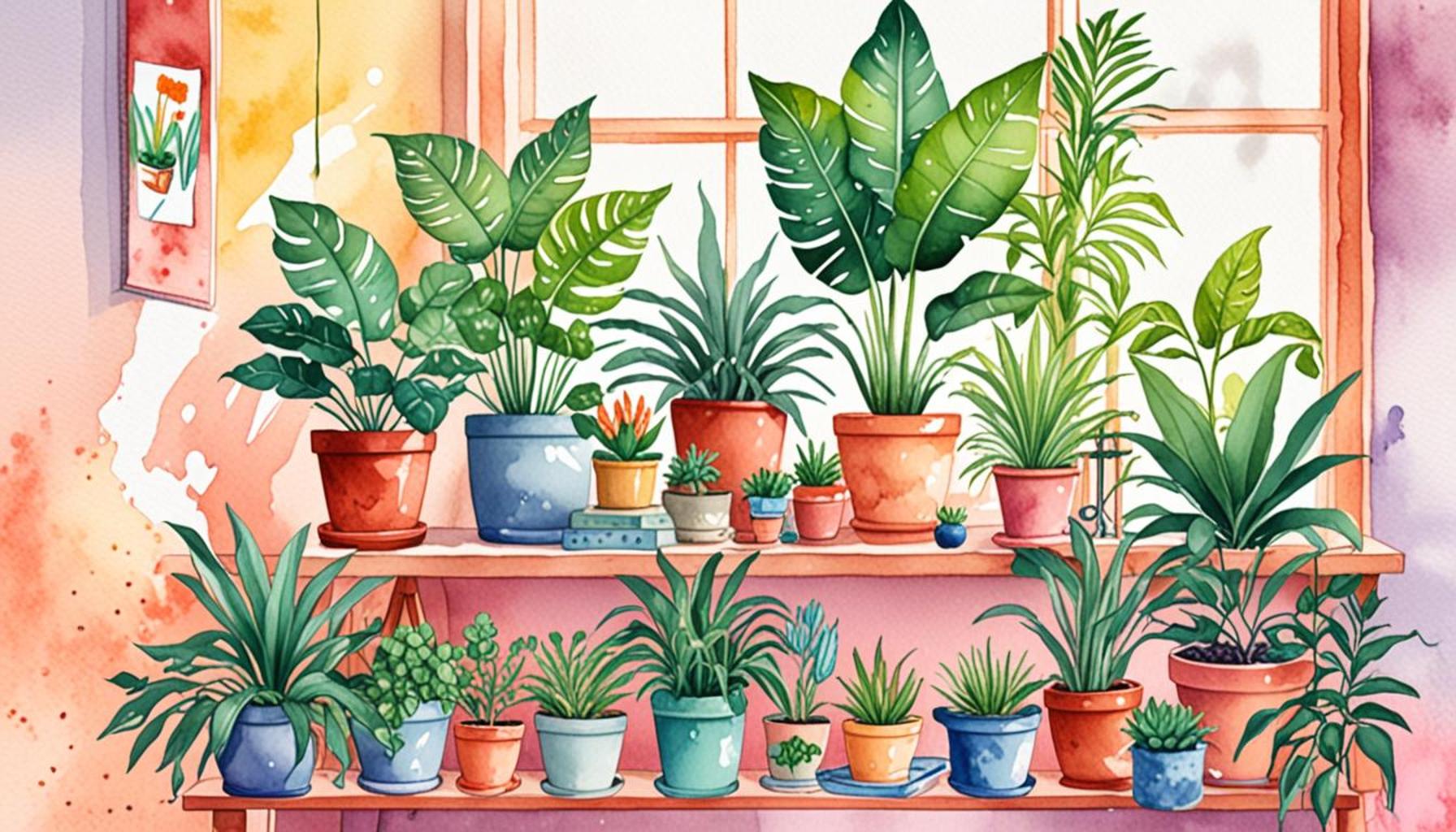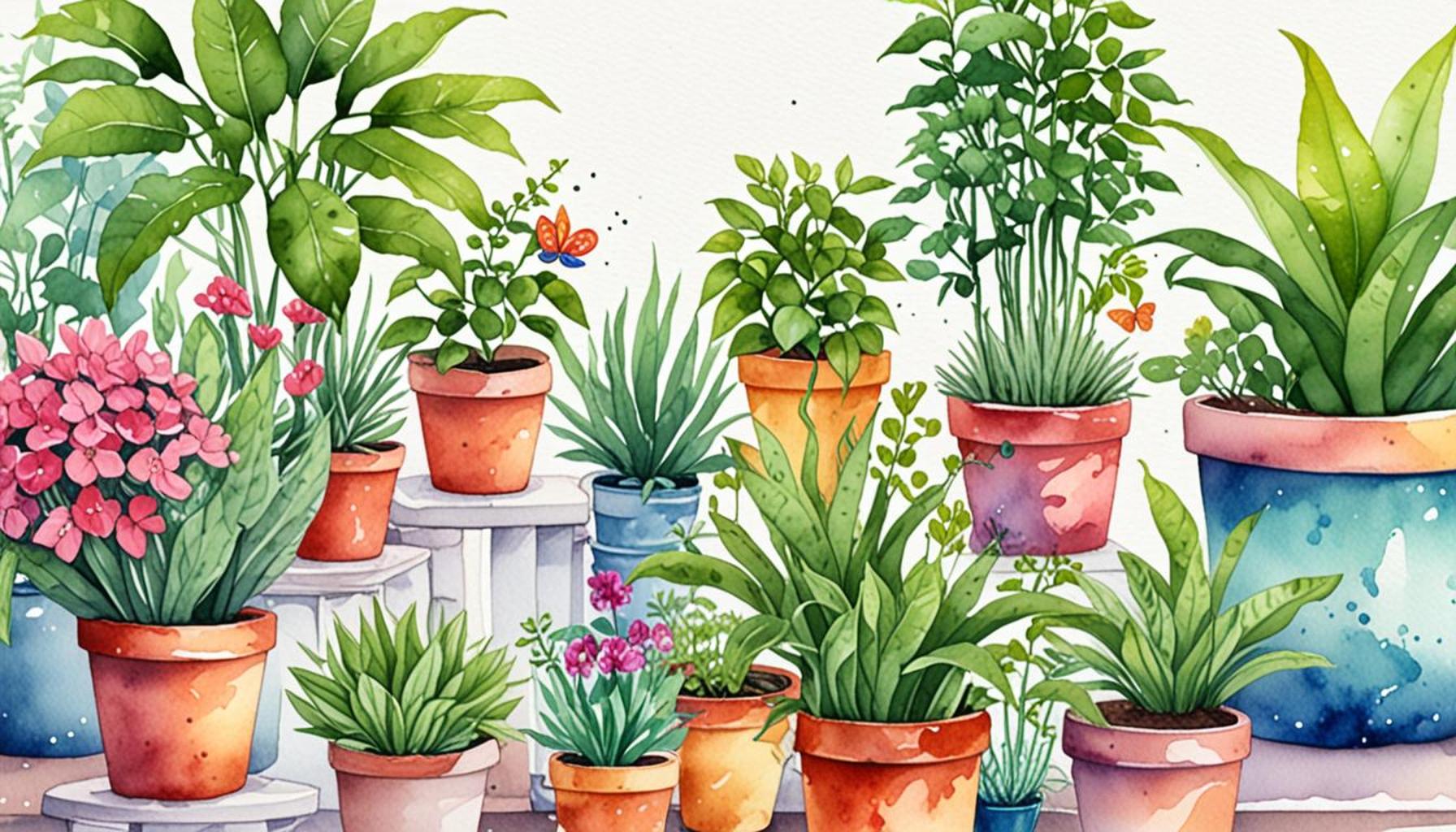How to choose indoor plants that purify the air for beginners

The Many Advantages of Indoor Plants
Indoor plants are not just a trendy element of home décor; they serve essential functions that can enhance your quality of life. Beyond their visual allure, these green companions can significantly purify the air you breathe, making your indoor environment healthier and more enjoyable. For novices, however, the process of selecting the right plants can appear daunting due to the vast array of options available.
Understanding the specific benefits that indoor plants can provide is crucial for making an informed selection. Here are several key advantages of incorporating plants into your home:
- Removal of toxins: Various common indoor plants, such as the spider plant and peace lily, have been shown to absorb harmful substances like formaldehyde, benzene, and trichloroethylene. These toxins often emanate from everyday materials such as carpets, paint, and furniture, contributing to poor indoor air quality.
- Increased humidity: Plants naturally release water vapor through a process known as transpiration. This can enhance indoor humidity levels, which is especially beneficial during the dry winter months in many parts of the United States. By improving humidity, plants can help reduce skin irritation and respiratory problems.
- Enhanced mood: Psychological studies indicate that proximity to plants can significantly improve emotional well-being. Research has shown that simply being around greenery can reduce stress, enhance focus, and even boost creativity. This makes having indoor plants a wonderful addition to both home and workspace settings.
When it comes to selecting the right indoor plants, there are a few considerations that can make the choice easier:
- Light requirements: Each plant species has unique light requirements. Understanding whether a particular area in your home receives direct sunlight, indirect sunlight, or is predominantly shaded can guide your selection. For instance, snake plants flourish in low-light conditions, making them ideal for offices.
- Maintenance: If you are new to gardening or possess a busy lifestyle, opt for low-maintenance varieties such as pothos or succulents. These plants are forgiving and require minimal care, allowing you to enjoy their benefits without added stress.
- Aesthetic preferences: Your home’s visual style plays a crucial role in plant selection. Whether you lean towards a modern minimalist approach or a cozy farmhouse feel, picking plants that complement your interior can create a cohesive and inviting atmosphere.
By delving into these factors, you can create a refreshing indoor oasis that not only beautifies your space but also contributes to better air quality and well-being. Consider exploring popular options like the rubber plant for its striking foliage or the fiddle leaf fig, known for its dramatic leaves, to elevate your indoor environment further. Ultimately, the right indoor plants can foster a sanctuary that enhances your daily living experience.
DISCOVER MORE: Click here to learn about raised bed garden preparation
Understanding Indoor Plant Selection for Air Purification
When venturing into the world of indoor plants, especially for air purification, it’s vital to consider a set of factors that simplify your decision-making process. For beginners, the sheer variety of houseplants available can be overwhelming, but certain principles can guide you toward making a selection that aligns with both your lifestyle and your space.
One of the first steps in choosing plants that purify the air is to assess the specific toxins you want to combat. According to the NASA Clean Air Study, certain plants are more efficient than others at filtering common indoor pollutants. For instance, the snake plant and peace lily are renowned for their ability to absorb formaldehyde, which is often found in cleaning products and building materials. By knowing which plants tackle particular toxins, you can tailor your selection to meet your specific health needs.
Additionally, it’s crucial to think about light conditions in your home. Different plants thrive under varying amounts of light. Here are some plants categorized based on their light requirements:
- Low Light: Snake plants, pothos, and ZZ plants are perfect for dimly lit areas and require minimal natural sunlight.
- Medium Light: Spider plants and philodendrons flourish well in spaces that receive indirect sunlight, making them highly adaptable for many rooms.
- Bright Light: If you have a sunlit spot, consider robust options like the rubber plant or dracaena, which love basking in direct sunlight.
Beyond light needs, maintenance requirements should also be a priority. Beginners often appreciate the resilience of low-maintenance plants, as they present a lower risk of over-watering or neglect. For example, succulents and cacti can withstand drought conditions and are incredibly forgiving for those still learning the ropes of indoor gardening.
Another factor to reflect on is your personal aesthetic. The various shapes, sizes, and colors of indoor plants can contribute to the overall vibe of your home. Choose plants that resonate with your style—perhaps the dramatic leaves of a fiddle leaf fig for a bold statement or the delicate blooms of an orchid for a touch of elegance. This personalization can enhance the emotional benefits of having plants around, contributing to a happier and more inviting space.
By focusing on these essential factors—toxicity, light needs, maintenance, and aesthetics—you can confidently navigate the world of indoor plants aimed at purifying air while enhancing your environment. Learning about the specific qualities of these plants not only aids in making informed decisions but can also support your goal of creating a healthier and more beautiful living space.
Understanding Air-Purifying Plants
Choosing indoor plants can be a transformative experience, particularly when one seeks to improve indoor air quality. Air-purifying plants not only enhance the aesthetic appeal of your home but also serve as natural filters, removing toxins and releasing oxygen. As you embark on your journey to select the right plants, keep in mind their maintenance needs, light requirements, and the specific pollutants they target.
Popular Air-Purifying Plants for Beginners
There are several options that are particularly suited for novices. For instance, the Spider Plant is not only resilient but effectively reduces formaldehyde levels. Meanwhile, the Peace Lily is celebrated for its ability to eliminate ammonia and benzene. Additionally, consider the Boston Fern, renowned for its humidity-boosting properties and air-cleansing abilities.
Factors to Consider When Choosing Your Plants
1. Light Conditions: Assess the natural light in your space. Some plants thrive in bright light, while others prefer indirect sunlight or even low light conditions.2. Watering Needs: Understanding how often a plant requires watering is crucial for its survival. Overwatering or underwatering can harm your plants.3. Toxicity: If you have pets or young children, research which plants are safe for them. Integrating air-purifying plants into your home can lead to enhanced well-being, making it an exciting venture for beginners. By familiarizing yourself with these key elements, you position yourself to create a healthier and more vibrant indoor environment. With research and care, your botanical choices can thrive and beautify your space while contributing to cleaner air.
| Category 1 | Category 2 |
|---|---|
| Spider Plant | Removes formaldehyde; easy maintenance. |
| Peace Lily | Eliminates ammonia and benzene; thrives in low light. |
| Boston Fern | Enhances humidity; excellent air filter. |
By focusing on these popular options, beginners can easily navigate the world of indoor gardening. These plants not only improve air quality but also promote a serene and pleasant atmosphere within your home. As you explore the various options available, consider starting with a few of these user-friendly plants to create your green sanctuary.
DISCOVER MORE: Click here for essential tips
Identifying Popular Indoor Plants for Air Purification
Now that you understand the fundamentals of selecting indoor plants, let’s explore some of the most effective and beginner-friendly options known for their air-purifying capabilities. Each of these plants not only enhances your home decor but also contributes to a healthier living environment by reducing indoor pollutants.
One standout choice is the spider plant (Chlorophytum comosum). Renowned for its ability to remove formaldehyde and xylene from the air, this resilient plant thrives in a variety of lighting conditions and tolerates occasional watering neglect — making it perfect for novices. Its cascading leaves create a visually appealing display, making a striking centerpiece on shelves or hanging baskets.
Another exceptional air-purifier is the Boston fern (Nephrolepis exaltata). This lush, green plant thrives in humid environments, which can encourage better air quality by increasing moisture in the air. While it does require consistent moisture and indirect light, its ability to eradicate formaldehyde, xylene, and other toxins makes it a valuable addition to kitchens or bathrooms, where humidity levels are often higher.
The peace lily (Spathiphyllum spp.) is also a top contender when it comes to cleaning the air. This beautiful plant is famous for its striking white blooms and glossy leaves, adding elegance to any room. Peace lilies are efficient at filtering out ammonia, benzene, and formaldehyde. While it prefers low to medium light, it’s critical to keep its soil consistently moist, making it relatively straightforward to care for. However, it is important to note that peace lilies can be toxic to pets, so place it in a safe location if you have furry friends at home.
For those looking for a larger indoor presence, the rubber plant (Ficus elastica) is an excellent choice. It is well-known for its air-purifying powers and ability to thrive in low light settings. This plant has broad and attractive leaves that not only play a role in improving air quality by eliminating toxins but also enhance the aesthetic appeal of your space. As it grows taller, it can become a striking focal point in your living room or office.
If you’re seeking something less traditional, consider the air plant (Tillandsia). While not a soil-dependent plant, air plants absorb moisture and nutrients through their leaves from the air and require bright, indirect sunlight. They are unique in their appearance and can be displayed creatively in terrariums, driftwood, or wall-mounted designs. Despite their unconventional care approach, they contribute to humidity and improve air quality by taking carbon dioxide and releasing oxygen.
In summary, selecting indoor plants that effectively purify the air comes with a plethora of options, each offering unique characteristics and visual appeal. Understanding your personal preferences — from plant size to care requirements and aesthetic styles — can greatly enhance your indoor gardening journey. As you embark on this rewarding endeavor, you’ll not only beautify your space but also improve the air quality, creating a healthier sanctuary for you and your family.
DISCOVER MORE: Click here for expert watering tips
Final Thoughts on Choosing Indoor Plants for Air Purification
In conclusion, selecting indoor plants that purify the air can be an exciting and fulfilling experience for beginners. With a variety of options available, such as the spider plant, Boston fern, peace lily, rubber plant, and air plant, each offering unique benefits and aesthetics, you are bound to find plants that suit your personal taste and lifestyle.
Remember, the key factors in your selection process include light requirements, water needs, and the size of the plant in relation to your space. Additionally, consider whether you have pets, as some plants can be toxic if ingested. Engaging with indoor gardening not only allows you to enhance your home’s atmosphere but also contributes positively to your health by improving air quality.
As you embark on this journey, don’t hesitate to explore more about each plant’s specific needs and benefits. Resources like local plant nurseries, online gardening communities, and books on botany can broaden your knowledge and deepen your appreciation for the natural world. By introducing air-purifying plants into your home, you’ll create a vibrant sanctuary that nurtures both your body and mind.
Make the choice to bring a little green into your life, and enjoy the myriad of benefits that come with caring for indoor plants. Happy gardening!


